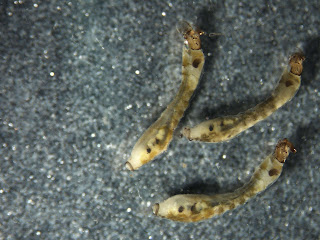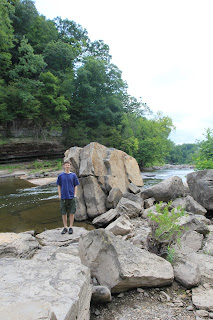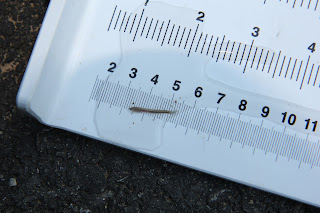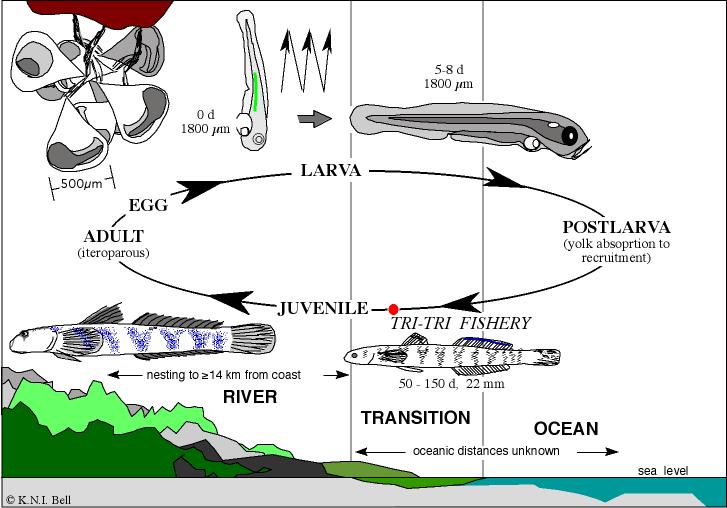Above is a damselfly perched on a leaf. Damselflies have four large wings that fold across the back. These are one of the most primitive aquatic insect groups (mayflies and dragonflies being the others). This individual was from Annsville Creek.
Another species of damselfly. All damselflies hunt on the wing capturing any small insects they can, they often then eat the prey on the wing while looking for another target.
This waterfall is a natural falls present on the Kaaterskill Creek outside of Catskill, NY. Sea lampreys are actually able to pass this barrier and spawn upstream.
This is a megalopteran, a different species, and likely a different genus (probably Sialis sp.), than the one we captured at the Black Creek. This is an adult which was out looking for a mate.Above are black fly larvae (Simulidae) that we collected during out work. These are the larvae which are filter feeders, and also good indicators of high water quality. They secure themselves with silk threads to the end of rocks and are present in the fastest flowing sections of the water.
We found lots of lampreys in this stream under I-87. You never know what you maybe driving over top of when you are in the car.
This is a mummichog (Fundulus heteroclitus) we captured in the Muitzes Kill. This is a male, if his fins were better exposed you would see that they are actually fairly colorful.
Natural falls located at High Falls, NY. These are the lower of the two falls, with a dam at the top of the highest falls. In the spring time sea lamprey adults are regularly recorded from immediately below these falls.
An ammocoete from immediately downstream of the falls pictured above. This animal (based on the other animals we found there) was probably 3-5 years old. The nametag it had said "Bob".
Me standing sheepishly next to a rock at High Falls that was recently relocated by hurricane Sandy. The water level after the hurricane was still another 50 feet higher than me.
Looking out onto the Hudson River from the Sawkill at Bard College. The green mat is actually an invasive plant (water chestnut, Trapa natans) that has become quite a problem in the Hudson River. However, the scenery is still gorgeous.
I will continue to post on this blog about sea lamprey, although we may now expand our coverage to more than the Hudson River!





































